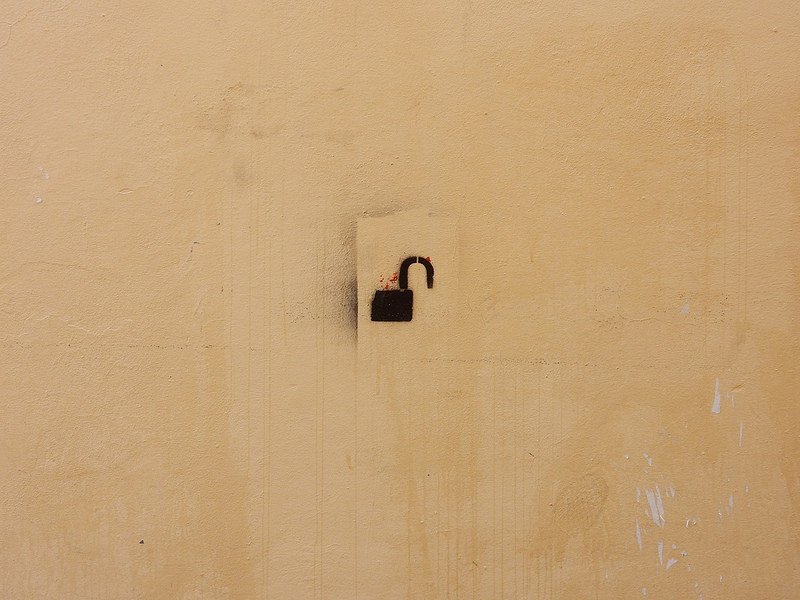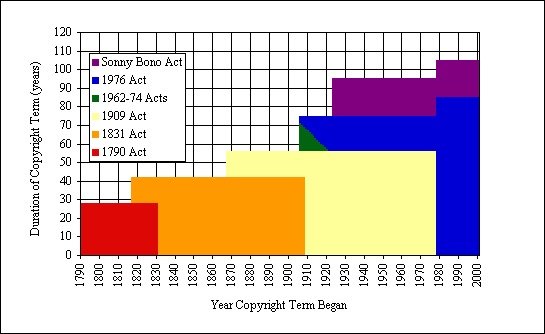
Today’s guest post is by intellectual property lawyer and novelist Brad Frazer (@bfrazjd).
The “public domain” is not a place. It is a term used to describe works of authorship (books, movies, poetry, artwork) that either due to their age or their legal status under U.S. copyright law, the ability of the putative copyright owner to enforce its rights under 17 U.S.C. Section 106 is extinguished.
Boy, that’s a mouthful of lawyer-speak, right?
To explain: when a sufficiently creative idea is reduced to a tangible medium, a copyright is created. The tangible thing in which the copyright resides (the photo, the movie, the book) is called the “work.” The owner of that copyright is the only person who may lawfully make copies of, distribute, make derivative works from, publicly perform or publicly display the work. These exclusive rights granted to a copyright owner are found in a U.S. law called 17 U.S.C. Section 106, which is part of the Copyright Act.
But these exclusive rights are not perpetual. Indeed, the U.S. Constitution, at Article I Section 8 Clause 8, states: “The Congress shall have power…to promote the progress of science and useful arts, by securing for limited times to authors…the exclusive right to their respective writings…”
Originally, the life of a copyright in the United States was limited to 28 years, although it could be renewed for an additional term. But over time, Congress passed legislation lengthening the duration of a copyright, so that today, for works created after January 1, 1978, a copyright lasts for the life of the author plus an additional 70 years, with no renewals. So if I wrote a book in 1978 and I live to be 90, the copyright in that book will not expire until the year 2138! (This is why authors and artists should consider copyrights when doing their estate planning.)

The periodic legislative extension of the duration of copyright in the United States is a source of tension between artists who wish to exploit the underlying works and make new screenplays or stage plays or novelizations or sequels or T-shirts, on the one hand, and those who make money off of the underlying works (think Hollywood studios), on the other. The latter group typically wishes to control—by licensing—how the works are used, by whom and for how much money.
The last such extension, called “The Sonny Bono Copyright Term Extension Act,” was passed in 1998. It was the law that put in place the current copyright terms, e.g., life of the author plus 70 years. It also did not go unnoticed by many pundits that the Disney Company may have had something to do with the enactment of the legislation, for without it, Mickey Mouse would have entered the public domain! This is why The Sonny Bono Copyright Term Extension Act was also derisively referred to at the time of its passage as “The Mickey Mouse Copyright Protection Act.”
Thus, it is kind of a big deal that on January 1, 2019, the copyrights of many works originally “copyrighted” in 1923 entered the public domain—meaning, that the copyright owners’ ability to enforce their Section 106 exclusive rights has expired. (The actual math of copyright registration and renewal is arcane, but here is additional reading.) Some of these works that are now in the public domain in the United States include Cecil B. DeMille’s film The Ten Commandments, Kahlil Gibran’s book The Prophet, and Robert Frost’s poem, “Stopping by Woods on a Snowy Evening.” So, if I wanted to produce T-shirts emblazoned with Frost’s famous couplet—
The woods are lovely, dark and deep.
But I have promises to keep,
And miles to go before I sleep,
And miles to go before I sleep.
—and sell them on Etsy, Robert Frost’s estate’s ability to sue me for copyright infringement and win the lawsuit has been reduced, for all practical purposes, to zero.
Since this much ballyhooed “Public Domain Day” on January 1, 2019, the internet has bloomed with lists of the works that became free of the Section 106 strictures, but I find the list promulgated by Duke University’s Center for the Study of the Public Domain to be the most authoritative.
The societal benefits that arise when a work enters the public domain are illustrated by Frank Capra’s iconic film, It’s a Wonderful Life. That work entered the public domain in 1975 because the copyright was not correctly renewed, and now television stations are free to broadcast the film royalty-free. While Capra’s estate may be deprived of licensing revenue as to that film, whole generations of people who might not be exposed to his works now know Frank Capra and will likely seek out and pay for rights to use his other works that are still under copyright. And we are free to make and sell T-shirts on Etsy that read: “Every time a bell rings, an angel gets its wings.”
So as you are looking for inspiration for your next book or film, peruse these lists of public domain works and see if perhaps you feel directed to, e.g., write a sequel to Virginia Woolf’s 1922 novel Jacob’s Room. If so, know that Public Domain Day in 2019 permits you the copyright freedoms to do so.
Brad Frazer is a partner at Boise, Idaho law firm Hawley Troxell where he practices internet and intellectual property law. He is a published novelist (http://www.diversionbooks.com/books/the-cure/) and a frequent speaker and writer on legal matters of interest to content creators. He may be reached at bfrazer@hawleytroxell.com.

I would love to know how international copyrights work. Let’s say a book was published by a UK publisher in 1922 and UK law stated author’s life + 100 years (I’m talking hypothetically here!) would that book still enter public domain in the US 70 years after the author’s death?
actually, the copyrights for IT’S A WONDERFUL LIFE were resolved: https://en.wikipedia.org/wiki/It%27s_a_Wonderful_Life
[…] Frazer tackles the question “what is public domain” (and tells us why 2019 is such a big […]
Awesome information, as always!
After reading Melville’s Moby Dick wading through the 1850s English, since it was in the public domain, I wrote an abridged version of it edited into modern English.
Thank you for this helpful information. I pinned it on my ‘for writer’ board to help others as well as for myself – to refer back to – I’m working on my next book and this will be information I’ll need. Thank you again!!
[…] To learn more about public domain and why it’s so important, click here. […]